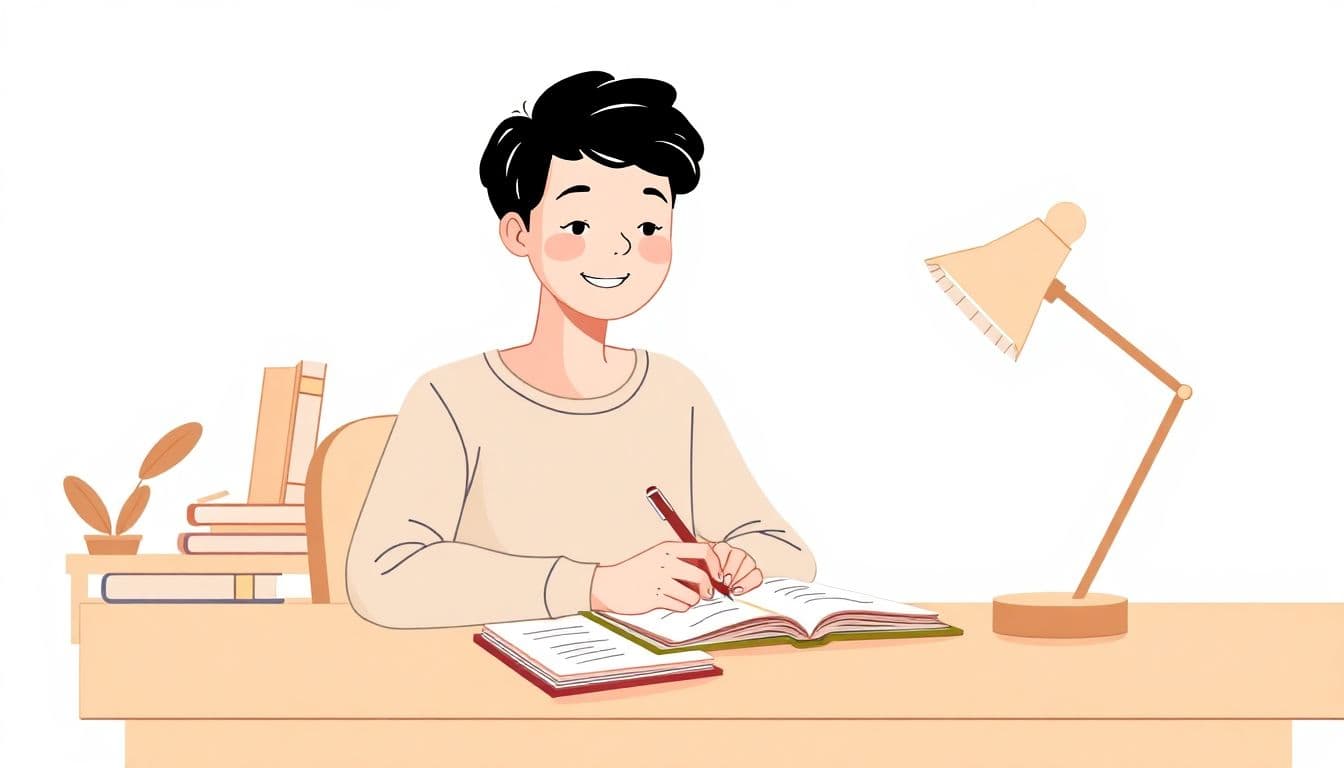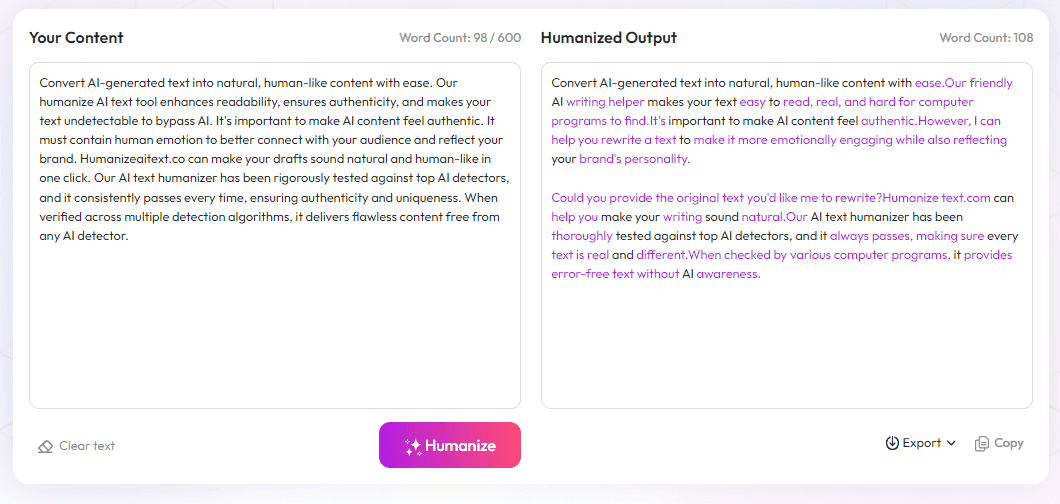Table of Contents
Struggling to make your books easier to read? Large print editions can be a real game changer, but formatting them the right way can be confusing. Luckily, if you keep reading, you'll find a simple step-by-step guide to help make your books more accessible for everyone.
Stick around, and you'll learn how to set up larger text, choose the right fonts, and organize your pages for easy reading. By the end, you'll have all the tips you need to create a clear, reader-friendly large print edition.
Key Takeaways
Key Takeaways
- Use large fonts of at least 16-18 points, with simple, easy-to-read fonts like Arial or Times New Roman. Avoid decorative or cursive styles.
- Set line spacing to 1.5 or double to prevent text from feeling cramped, and keep margins wide for less clutter and easier notes.
- Ensure high contrast between text and background—black on white or cream is best—and test colors to avoid glare.
- Break long paragraphs into shorter blocks, use headings and bullet points to guide the reader, and keep page layout simple and consistent.
- Minimize decorative elements and avoid busy backgrounds to keep focus on the content. Use larger chapter titles and clear section markers for easy navigation.
- Design pages for comfort by including ample white space, large headings, and clear organization. Incorporate accessibility features like larger page numbers and symbols.
- Stay aware of emerging printing technologies and trends such as digital and eco-friendly options to make production easier and more sustainable.

How to Format a Large Print Edition
When it comes to making books easier to read for everyone, especially for those with visual impairments or reading difficulties, formatting is key. The most important step is choosing a font size of at least 16 to 18 points. This ensures the text isn’t tiny and becomes more comfortable to read without straining the eyes.
Pick a clear, simple font—Arial, Times New Roman, or Verdana are popular options because they’re easy to decipher. Avoid decorative or cursive fonts, which can be hard on the eyes, especially at larger sizes. For a professional look, stick with fonts that are widely used in print books.
Line spacing plays a crucial role. Use 1.5 or double line spacing to prevent the text from feeling cramped, giving readers plenty of space to follow the lines comfortably. Wide margins also help reduce visual clutter and allow for easy annotation or note-taking if needed.
High contrast between the text and background is a must. Black text on a white or cream paper is classic, but some prefer a softer contrast with dark navy or dark brown on light backgrounds. The goal is to make reading effortless, so avoid color combinations that cause glare or make the text difficult to see.
Long paragraphs can be overwhelming in large print editions. Break the text into shorter paragraphs—ideally no more than three or four lines long—to improve readability. Use headings, subheadings, and bullet points to organize content clearly and help readers navigate the material easily.
Reducing complex layouts or decorative elements is wise. Keep the page design simple to eliminate distractions. Consistency in font, size, and spacing helps readers become familiar with the format, making reading smoother.
When preparing your manuscript, consider accessibility features like larger chapter titles and clear section breaks. This not only benefits readers with visual impairments but also creates a welcoming experience for everyone who picks up your book.
For further tips on creating accessible books, you might explore how (https://automateed.com/how-to-get-a-book-published-without-an-agent/) technology can help produce customized large print editions with ease. Also, leveraging (https://automateed.com/about-the-author-examples-for-students/) can streamline the production process, ensuring your large print edition is ready faster and to the highest standards.

Choosing the Right Font and Size for Large Print Books
Selecting a font that is both clear and easy to read is essential for large print editions.
Stick to sans-serif fonts like Arial or Verdana, or serif fonts such as Times New Roman, ensuring they’re at least 16 to 18 points in size.
Avoid ornate, cursive, or decorative fonts that can strain the eyes or hinder readability.
Test different fonts on actual pages to see how they hold up in print, considering how the font density and spacing affect comfort.
Use bold or slightly darker shades for headings to help differentiate sections without overwhelming the reader.
Remember, simple and familiar fonts tend to be the most effective for readability and accessibility.
Designing Pages for Better Readability and Eye Comfort
Page layout makes a big difference in how easy a book is to read.
Maintain generous margins to prevent the content from feeling cluttered and to facilitate note-taking.
Use 1.5 or double line spacing to give eyes more space to follow along smoothly.
Break long paragraphs into smaller blocks, ideally no more than three or four lines each, to avoid overwhelming the reader.
Incorporate clear section headings with larger fonts to guide readers through the content effortlessly.
Keep decorative elements to a minimum—simple borders or subtle shading can add interest without distraction.
Consistency in layout helps readers become familiar with the flow, reducing cognitive fatigue.
Selecting Appropriate Colors and Contrasts
Contrast is key when working on large print editions.
Black text on white or cream paper remains the gold standard for clarity.
Some readers prefer softer contrasts like dark navy or brown on light backgrounds, which may be gentler on the eyes.
Avoid color combinations that produce glare or make the text hard to distinguish, especially under different lighting conditions.
Test print samples to ensure the chosen colors and contrast levels work well in actual reading environments.
A subtle background tint can be used sparingly to reduce brightness glare but keep readability high.
Breaking Content into Manageable Sections
Dividing large text blocks into shorter, digestible parts helps maintain focus.
Aim for paragraphs that are no longer than three or four lines.
Use headings, subheadings, bullet points, or numbered lists to organize information logically.
Incorporate white space around sections to give the eyes a break from continuous text.
Design chapter starts with a larger, clear title to signal a new section and provide context.
Special features like sidebars, call-out boxes, or tips can highlight important details without clutter.
This approach makes the material feel approachable and prevents fatigue, especially on large pages.
Streamlining Layouts and Minimizing Distractions
Keep page backgrounds simple—avoid busy patterns or excessive decorative elements.
Limit the use of images or graphics unless they serve a clear purpose and are scaled for readability.
Use a consistent layout style throughout the book to help readers easily locate key information.
Avoid distracting fonts or font styles for body text.
Ensure line length is about 50–60 characters to make reading smooth and reduce eyestrain.
Consistent spacing between paragraphs and sections helps create a rhythm that’s easy to follow.
Simpler design ensures the focus remains on the content, not on extraneous decorations.
Enhancing Accessibility Features for Large Print Editions
Clear, bold chapter titles and section headers aid navigation.
Add larger page numbers and chapter markers in contrasting colors.
Use accessible symbols or icons to denote important notes or tips.
Incorporate features like tactile markers or braille if producing physical copies for the visually impaired.
Design with flexibility in mind, allowing for annotations or margin notes.
Providing digital versions with adjustable font sizes and screen readers offers extra accessibility options.
Making these features standard can truly broaden your audience and improve reading experiences.
The Future of Large Print Publishing: Technology and Trends
The large-format printer market is growing, with a value reaching over $9 billion in 2023.
Advancements in digital and AI-driven printing speed up production and reduce costs significantly, sometimes saving up to 30–50%.
Sustainability plays a big role; environmentally friendly inks and biodegradable materials are increasingly popular—over 85% of customers seek eco-conscious options.
Trend shifts show a move toward personalized print materials, which have seen response rates increase by 37%.
Workflow automation software helps companies meet faster turnaround demands, with 59% expecting higher productivity in 2025.
The growth of large format printing segments supports advertising, retail, and healthcare sectors, making the industry more dynamic than ever.
Keeping an eye on these innovations is key if you're considering publishing large print editions in the future.
Summary of Best Practices for Large Print Book Formatting
Create clean, simple layouts with plenty of white space to improve comfort.
Use large, clear fonts like Arial, Verdana, or Times New Roman at 16–18 points.
Break text into short paragraphs, and organize content with headings and bullet points.
Maintain high contrast between text and background for maximum clarity.
Keep visual elements minimal unless they serve a clear purpose.
Implement accessibility features such as larger chapter titles and contrasting page markers.
Finally, stay aware of technological trends that can help streamline production and ensure your book reaches more readers effectively.
FAQs
A large print edition features bigger fonts and increased spacing to improve readability, making it easier for people with visual impairments or reading difficulties to enjoy the book comfortably.
Start by increasing font size (usually 16-24 points), choosing clear fonts like Arial or Times New Roman, and adding generous margins and spacing to make the text easier to read and navigate.
Yes, you can update the font size, spacing, and layout of your book's files to create a large print edition, ensuring the formatting remains consistent across all pages for readability.
Large print formatting makes books accessible for readers with visual impairments or reading challenges, helping them enjoy reading without straining or difficulty in seeing the text clearly.



